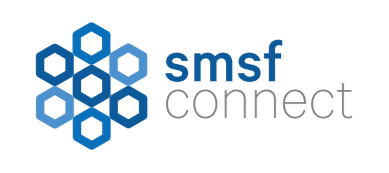Content provided by Thinktank
The Federal Government’s decision to increase the number of members in an SMSF from four to six from 1 July 2021 has been long awaited by a small number of SMSFs. To date, most of the focus has been expanding family SMSFs. But this reform has opened up possibilities for small businesses and partnerships, as the scenario painted below illustrates.
Bill and John have been running a successful plumbing business for more than two decades. As life-long friends, it’s been a handshake agreement based on mutual trust. But with Bill’s son Simon having completed his apprenticeship and joining the business and John’s daughter Sarah wanting to go down the same career path on leaving school, they realise it’s time to formalise their verbal agreement.
In particular, they agree that running the business from the back of their Utes and on their kitchen tables must end, and a more formal structure implemented, especially as Simon and Sarah will have equity in the business. They will also need business premises – and that requires capital.
Both have self-managed super funds (SMSFs) and an understanding that they can use their funds to acquire property that can then be leased back to the business. But neither wants all their super savings in one asset, so they will consider a conservatively geared limited recourse borrowing arrangement (LRBA) to fund part of the acquisition.
They also appreciate that from 1 July this year the number of members allowed in a single SMSF has increased from four to six. Although it’s unlikely to appeal to most funds (about 70% of funds have two members with single-member funds next on the list), for Bill and John it offers a window of opportunity to reset their retirement income strategies by closing their existing (husband-wife) funds and setting up a new SMSF that has the two couples and Simon and Sarah as members. Their current super assets will be transferred to the new fund.
It will require careful planning and require specialist advice as there are pitfalls (of which more later). But for Bill and John, it means their superannuation, as well as the children’s, can be an integral part of the business in which they all have an equity stake.
Since this legislation became law, it has been a common assumption it would be primarily used to allow additional family members to join the traditional mum-and-dad SMSF. The opportunity for people such as Bill and John has hardly got a look in.
But at Thinktank, we are seeing already some four-member funds having new business partners join (typically in a new SMSF) to acquire a commercial property to operate as “business real property”. It is working well for these clients and is certainly outside the perimeter of the expanded family SMSF.
Those considering going down this path have also been assisted by other changes that took effect on 1 July, notably to contribution levels that will increase in line with rises in the cost of living. This applies to both concessional contributions (from $25,000 to $27,500 this financial year) and for non-concessional contributions (from $100,000 to $110,000 this financial year).
From the perspective of Bill and John, they see some real advantages in combining their superannuation savings and having Simon and Sarah join the fund.
By pooling their capital, they will broaden their investment opportunities, hopefully providing better returns. Within the limits imposed by the trust deed and investment strategy, the sky’s the limit as to where they invest, be that overseas shares, private equity or even collectables. Then there are the tax advantages, with the SMSF having a 15% limit in the accumulation phase.
With the SG of six salaries (Bill and John’s spouses both work outside the plumbing business) going into the fund, their capacity to increase their borrowing via an LRBA is enhanced, both in terms of being able to meet interest payments and having six members as guarantors.
Finally, the superannuation legislation typically protects members’ interests in their fund from bankruptcy. So, in the unlikely event of the plumbing business having to declare bankruptcy, their super is protected. Not so other assets they have outside super.
But as mentioned above there are potential downsides. Bill and John would not be the first life-long friends who have fallen out over a business relationship, especially with their children involved. They will need to get specialist advice on voting rights and other terms in their trust deed, and all fund members (including Simon and Sarah) will also need to understand their rights, roles, and responsibilities.
A marriage break-up is another possibility. In the future, and depending on the decisions Simon and Sarah make, there could be four relationships with a stake in the fund. In this event it could make divorce proceedings even more problematic. Trustees could be required to sell assets, potentially resulting in taxation liabilities where assets were sold, adversely impacting on all fund members. The outcome could be the forced sale of assets that the other members do not want to sell.
Even in the absence of divorce proceedings, the acquiring and selling of assets could cause conflict. In retirement, Bill and John and their spouses could have a more conservative view on asset allocation compared with their children in the accumulation phase.
Further forward, there is the possibility of cognitive decline and even elder abuse. Advisers must ensure clients have the cognitive capacity to understand what’s happening with their fund as they get older. This is why it is so critically important to get the right structure in place now to guard against any unforeseen circumstances in the future. Forewarned is forearmed.
From Thinktank’s perspective, we believe this is another step forward in the development in SMSFs and how they can be productively used to plan for retirement by an even larger group of investors. The recent statistics for 30 June 2021 released by the ATO shows ongoing growth since last year of about 11% in total assets as well as the continued growth in real property within the asset allocation of SMSFs of slightly more at nearly 14%.
Our experience is very similar with steady growth over the past year before picking up pace in the last quarter (April-June) in residential and commercial property with owner-occupied “business real property” running about two to one against residential investments.
Content provided by:
Disclaimer: This information has been prepared on a strictly confidential basis by Think Tank Group Pty Ltd (“Thinktank”) and may neither be reproduced in whole nor in part, nor may any of its contents be divulged to any third party without the prior written consent of Thinktank. This information is not intended to create legal relations and is not binding on Thinktank under any circumstances whatsoever. This information has been prepared in good faith and is based on information obtained from sources believed to be reliable, however Thinktank does not make any representation or warranty that it is accurate, complete or up to date. The information may be based on certain assumptions or market conditions, and if those assumptions or market conditions change, the information may change. No independent verification of the information has been made. Any quotes given are indicative only. No part of this information is to be construed as a solicitation to buy or sell any product, or to engage in, or refrain from engaging in, any transaction.
To the extent permitted by law, Thinktank nor any of its associates, directors, officers or employees, or any other person, makes any promise, guarantee, representation or warranty, either express or implied, to any person as to the accuracy or completeness of this information, or of any other information, materials or opinions, whether written or oral, that have been, or maybe, prepared or furnished by Thinktank, including, without limitation, economic and financial projections and risk evaluation. No responsibility or liability whatsoever (in negligence or otherwise) is accepted by any person for any errors, mis-statements or omissions in this information or any other information or materials. Without prejudice to the foregoing, neither Thinktank, nor any of its associates, directors, officers, employees nor any other person shall be liable for any loss or damage (whether direct, indirect or consequential) suffered by any person as a result of relying on any statement in, or omission from this information. Nothing in this information should be construed as legal, financial, accounting, tax or other advice.


